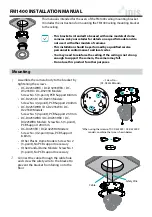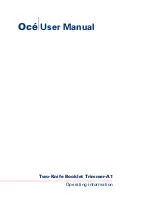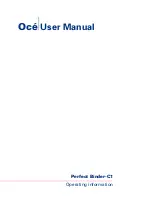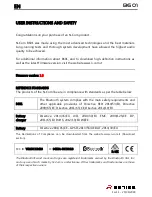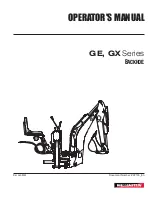
Safety Information
generate high temperatures. Otherwise, equipment housing will melt or the equipment
will be heated and cause a fire.
When the equipment is running, do not obscure or cover it with flammables, such as
paper and cotton fabrics. Otherwise, heat dissipation of the equipment fails, which will
cause housing deformation and a fire.
The equipment (or system) must be installed and used in specified areas.
Do not block air vents when the equipment is running. Keep air vents at a distance from
the wall or other objects that block the air vents as required in the
Hardware Installation
and Maintenance Guide
. The minimum distance is generally 5 cm if it is not specified.
The equipment that cannot meet IP54 waterproof and dustproof standard cannot be used
in outdoor environments.
1.2.1
Indoor Installation
Ensure there is no water penetration, leakage or condensation (in case of air conditioner
failure in the equipment room) on the equipment top. Otherwise, water may flow into the
equipment, causing equipment failure.
If fixed equipment has a large hole at the bottom, the equipment must be installed on
concrete, tile or non- combustible surface.
Prevent rats and pests from the installation site.
Wall Installation
Before drilling holes on the wall, ensure there is no circuit, water conduit or gas pipeline
in the wall area to be drilled to avoid body injury.
Do not place any flammables or explosive objects above or under the equipment, and do
not obscure the equipment with foreign objects within 1 m scope.
In wall installation mode, ensure no hole facing upwards to prevent water ingress and
equipment damage.
Ensure screws are securely installed. Otherwise, the equipment may fall due to tension
after cable connection, causing equipment damage or even personnel injury.
1.3
Electrical Safety
Grounding
Before grounding, ensure the protection ground is reliably grounded in accordance with
local building distribution specifications.
For the equipment requiring grounding, connect the protective earthing cable essential
before equipment installation, and disconnect the protective earthing cable after the
equipment is removed.
For the equipment using a socket with earthing terminal, ensure the earthing terminal is
connected to the protective earthing essential.
























